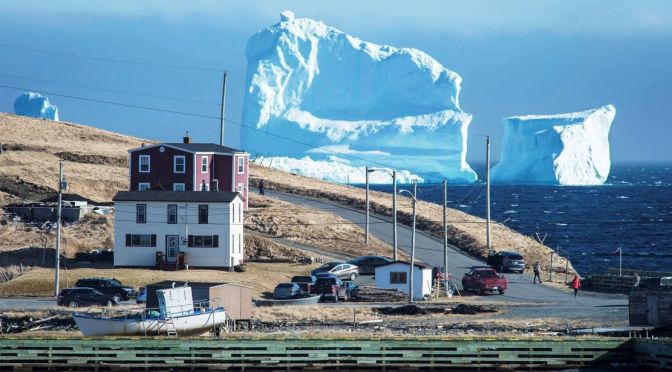
Where Whales, Puffins and Icebergs Jostle for Your Attention
The New York Times (June 5, 2023) – Each spring, opalescent icebergs from the Greenland ice sheet pass through Iceberg Alley, off the eastern edge of Canada, on a slow-motion journey southward.

“I never trust the mind of an iceberg,” Cecil Stockley told me. He estimates its length, multiplies by five and keeps his boat at least that distance away.
Dave Boyd said his safety rules depend on which type of iceberg he’s dealing with. “A tabular is generally pretty mellow,” Mr. Boyd explained as we floated off the coast of Newfoundland, referring to icebergs with steep sides and large, flat tops. “But a pinnacle” — a tall iceberg with one or more spires — “can be a real beast.”

Barry Rogers doesn’t just look at an iceberg; he listens to it, as well. When the normal Rice Krispies-like pop of escaping air bubbles gives way to a much louder frying-pan sizzle, the iceberg may be about to roll over or even split apart, he explained.
In 1912, one such iceberg struck the starboard side of the Titanic on its maiden voyage across the Atlantic. Over the years, plenty of others have done lesser damage to ships, oil rigs and even the occasional unlucky — or foolhardy — kayaker.

